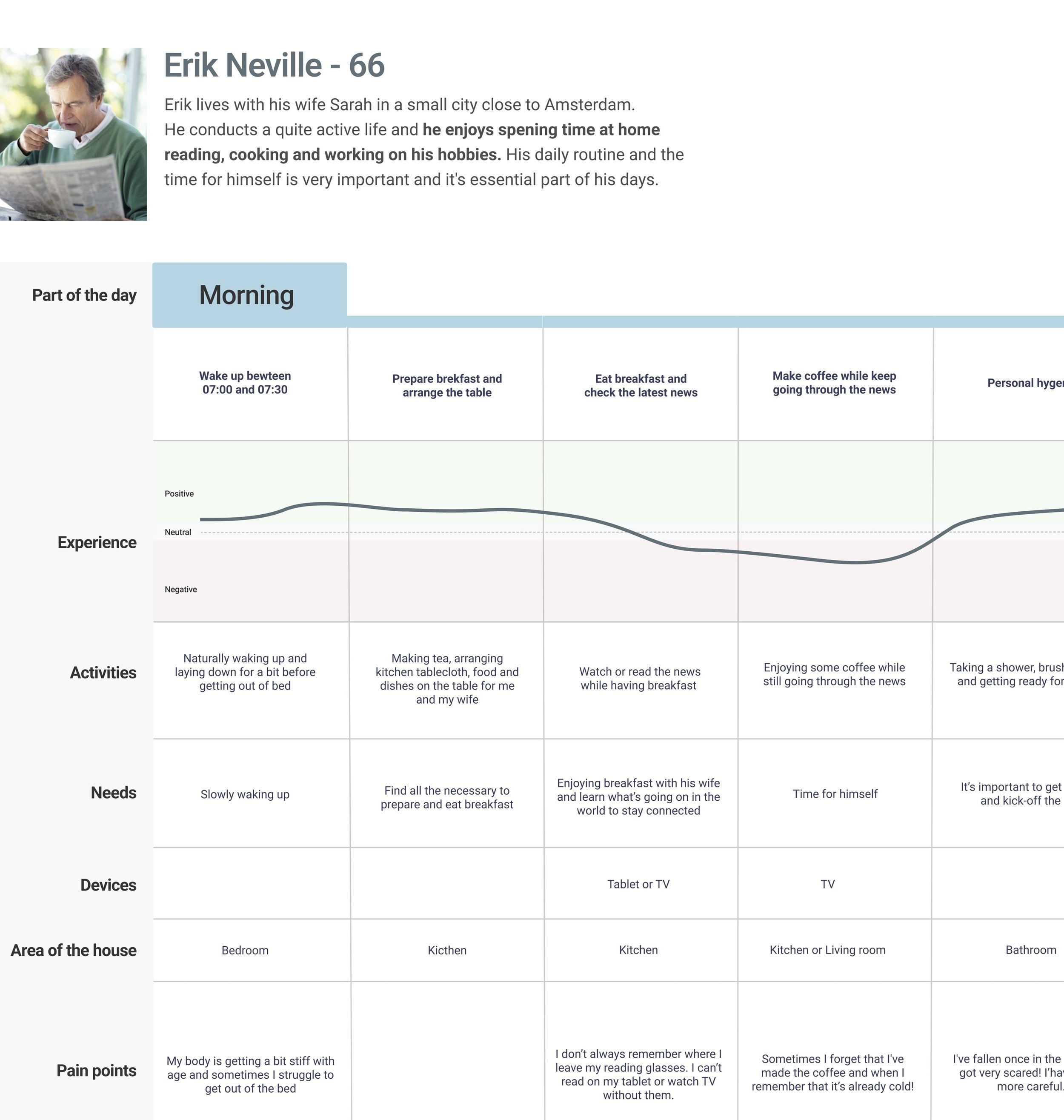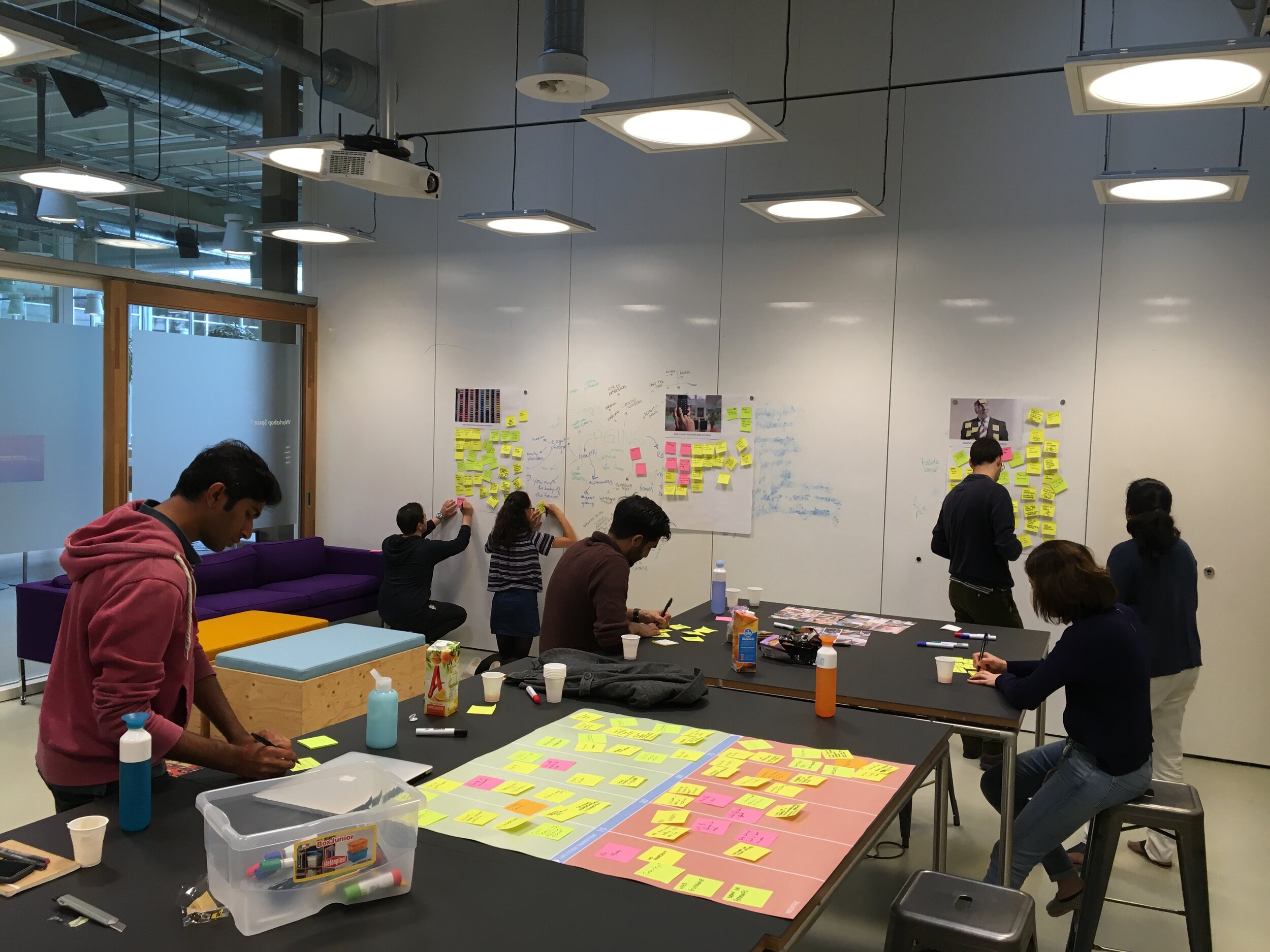CUéS
Scalable, customizable and interconnected system designed to empower & support older people to age independently at home.
ROLE
Solo UX Designer & Researcher
COMPANY
Philips Design - Eindhoven (NL)
YEAR
June to October 2016 (5 months)
RESPONSIBILITIES
Qualitative research || Data analysis || Opportunity space definition || Ideation || UX/UI design || Validation
Overview
This project focuses on understanding the so defined “young old” (65+) to understand age, the ageing process and how technological innovation can support ageing people.
Challenge
Investigate what & how the IoT (Internet of Things) can support & empower older people to age independently at home.
Approach
An iterative process (Double-diamond) to better understand and identify the problem we are trying to solve. To then define the design direction, conceptualize and validate with users.
Research
Secondary research
Better understand ageing through previous studies, projects and meetings with experts.
Primary research
Research on field and diary studies to learn directly from the researched target group.
Dairy study delivered to participants - Cultural probes.
Research findings
By analyzing research findings, I was able to map out participants’ activities, routines, pain points, needs and frustrations encountered at home.
Sneak peak on the analysing of some consumer research findings.
Analysis
The analysis was done by looking at the problems from two different angles: “Objects” & “Humans”.
Analysis pt.1 - Objects
Circos diagram
The 1st part of the analysis focused on the objects that were part of the participants’ routine. The goal was to discover correlations and, possibly, unforeseen patterns.
Circos diagram - Data visualization of the gathered insights.
Analysis pt.2 - Humans
Journey mapping
The 2nd part of the analysis focused on the participants and mapping out their routines, activities, needs and pain points.
Two journey maps of the same person at two different ageing stages (66 & 87 y/o) were created.
Journey map of Erik Neville at 66
Opportunity area
Create focus based on research insights
Concerns about the decline of cognitive abilities were often raised through the research. As we get older, it requires more effort to cope with everyday challenges and cognitive overload can cause discomfort, stress and it might affect the ability to live independently.
Problem statement
How can we understand early signs of cognitive degenerative changes & treat them in time, so to increase the quality of life of people ageing independently at home?
Explore ideas
Co-design workshop
Workshop with experts from engineering, development, design, gerontology and business to ideate on possible solutions to solve the investigated problem.
Brainstorm and co-creation workshop.
Concept
How does it work?
An interconnected and scalable system with sensor nodes embedded in everyday use objects that supports daily forgetfulness, while detecting possible early signs of severe cognitive changes.
Short-term
Helps with daily forgetfulness by helping to locate misplaced objects and keeping things together so to reduce frustration and stress.
Long-term
Through data-gathering, the algorithm learns the living patterns and is able to detect unusual changes in cognitive behaviors.
Visual digram of connected objects
Design exploration
Starting from initial high-level wireframes to then going through a few design iterations to explore possible solutions to visualize the interface.
Some screens explorations of one of the pages (Sociogram).
Evaluation
Evaluated the concept with 6 participants through a lo-fi prototype composed of both physical nodes and an initial digital interface.
Photo from a user testing session
OUTCOME
The digital interface connects the physical nodes (and the data gathered) with the user, creating value and meaning in the short and long-term.
Left to right: Dashboard, Sociogram & Find (AR).
Impact
The concept of using everyday use objects to understand and prevent health concerns triggered interest within the organization, especially for telehealthcare purposes.
The outcome of the project
Insights on routines, habits and pain points were used to enhance existing segmentations.
The creation of the infrastructure and the physical nodes went through a feasibility study with the aim to create new research data-gathering kit (via sensors).
Insights gathered through the user interface were used as input for machine learning data-visualisation.
Insights on the skills, roles and expertise needed for teams working on these explorative projects.
Concept feasibility study and 1st design iteration.











